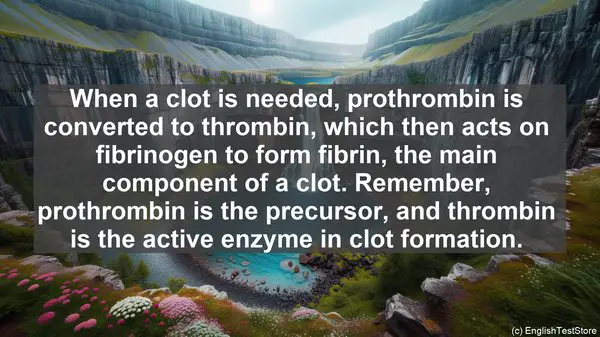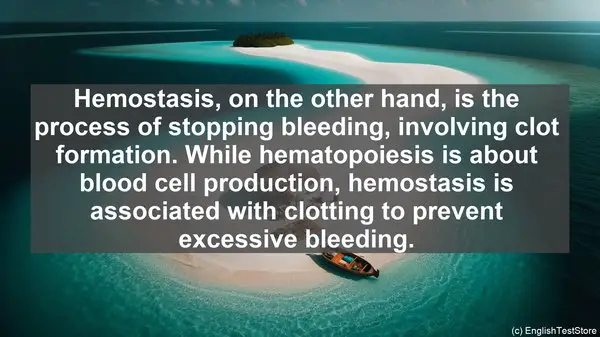Introduction
In the field of hematology, there are several words that often cause confusion. Today, we’ll be discussing the top 10 commonly confused words in this fascinating branch of medicine.
1. Leukemia vs. Lymphoma
Leukemia and lymphoma are both types of blood cancers, but they differ in their origin. Leukemia primarily affects the bone marrow and results in abnormal white blood cell production, while lymphoma originates in the lymphatic system. Remember, leukemia is a cancer of the blood, while lymphoma is a cancer of the lymphatic system.
2. Anemia vs. Hemophilia
Anemia and hemophilia are two distinct conditions. Anemia is characterized by a deficiency of red blood cells or hemoglobin, leading to fatigue and weakness. On the other hand, hemophilia is a genetic disorder that impairs the blood’s ability to clot, resulting in prolonged bleeding. While anemia is related to a lack of red blood cells, hemophilia is associated with clotting factor deficiencies.
3. Thrombosis vs. Embolism
Thrombosis and embolism are both conditions involving blood clots. Thrombosis occurs when a clot forms within a blood vessel, obstructing the flow. In contrast, an embolism happens when a clot, known as an embolus, travels through the bloodstream and gets lodged in a smaller vessel, causing a blockage. Think of thrombosis as a clot forming in a blood vessel, and embolism as a clot that has broken free and is now causing a blockage elsewhere.
4. Platelets vs. Plasma
Platelets and plasma are components of blood, but they serve different functions. Platelets are tiny cell fragments that play a crucial role in clotting, preventing excessive bleeding. Plasma, on the other hand, is the liquid part of blood that carries various substances, including hormones, nutrients, and waste products. While platelets are involved in clotting, plasma acts as a carrier for these components.
5. Erythrocytes vs. Leukocytes
Erythrocytes and leukocytes are types of blood cells. Erythrocytes, also known as red blood cells, are responsible for carrying oxygen throughout the body. Leukocytes, or white blood cells, are part of the immune system and help fight infections. Remember, erythrocytes are involved in oxygen transport, while leukocytes are associated with immune responses.
6. Hemoglobin vs. Hematocrit
Hemoglobin and hematocrit are measures of blood components. Hemoglobin is a protein in red blood cells that binds to oxygen, enabling its transport. Hematocrit, on the other hand, is the percentage of red blood cells in the total blood volume. While hemoglobin is a protein responsible for oxygen binding, hematocrit is a measure of the proportion of red blood cells in blood.
7. Neutrophils vs. Lymphocytes
Neutrophils and lymphocytes are types of white blood cells. Neutrophils are the most abundant white blood cells and are primarily involved in fighting bacterial infections. Lymphocytes, on the other hand, play a crucial role in the immune response, including the production of antibodies. While neutrophils are associated with bacterial defense, lymphocytes are involved in the broader immune response.

8. Coagulation vs. Fibrinolysis
Coagulation and fibrinolysis are two processes related to blood clotting. Coagulation is the formation of a clot to prevent bleeding, while fibrinolysis is the breakdown of the clot once it’s no longer needed. Think of coagulation as clot formation and fibrinolysis as the subsequent clot breakdown.
9. Hematopoiesis vs. Hemostasis
Hematopoiesis and hemostasis are essential processes in hematology. Hematopoiesis is the production of blood cells, which occurs primarily in the bone marrow. Hemostasis, on the other hand, is the process of stopping bleeding, involving clot formation. While hematopoiesis is about blood cell production, hemostasis is associated with clotting to prevent excessive bleeding.
10. Prothrombin vs. Thrombin
Prothrombin and thrombin are proteins involved in the blood clotting cascade. Prothrombin is an inactive precursor, while thrombin is the active enzyme. When a clot is needed, prothrombin is converted to thrombin, which then acts on fibrinogen to form fibrin, the main component of a clot. Remember, prothrombin is the precursor, and thrombin is the active enzyme in clot formation.

